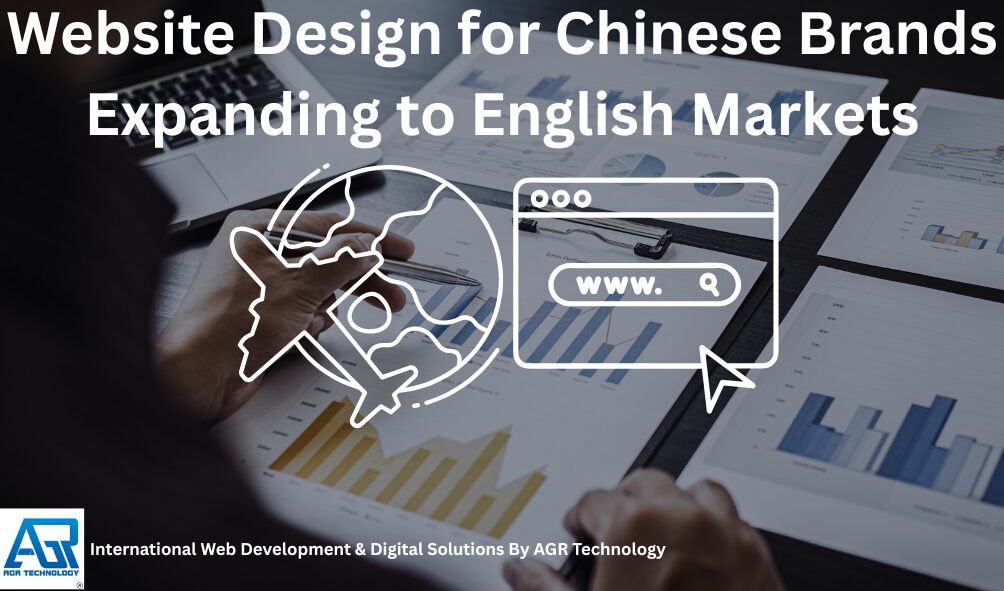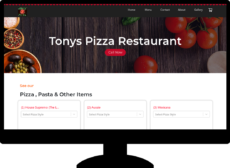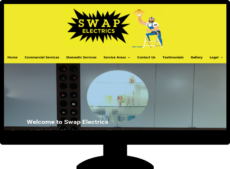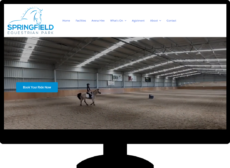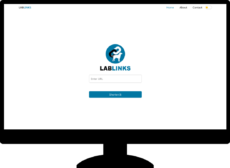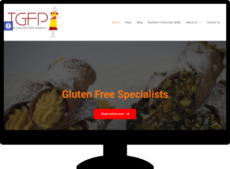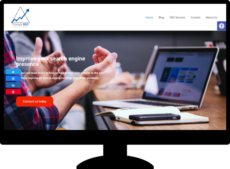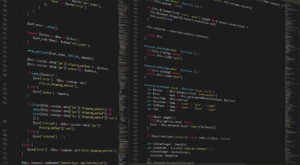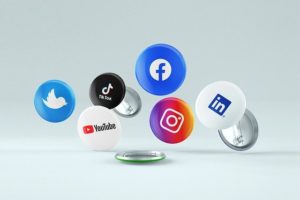Expanding into English-speaking markets presents both exciting opportunities and unique challenges for Chinese brands. As global eCommerce continues to boom, more Chinese companies are looking beyond their borders, aiming to connect with new audiences and build lasting brand recognition overseas. However, simply translating content isn’t enough—success depends on understanding the expectations and habits of local users.
We’ve seen that web design plays a crucial role in shaping first impressions and building trust. English-speaking consumers expect intuitive navigation, clear branding, and seamless online experiences. By adapting design elements to fit these preferences, Chinese brands can bridge cultural gaps and stand out in competitive markets. Let’s explore how thoughtful web design can turn international expansion into a real growth story.
Get into contact with us
Helping drive results for our clients of all sizes


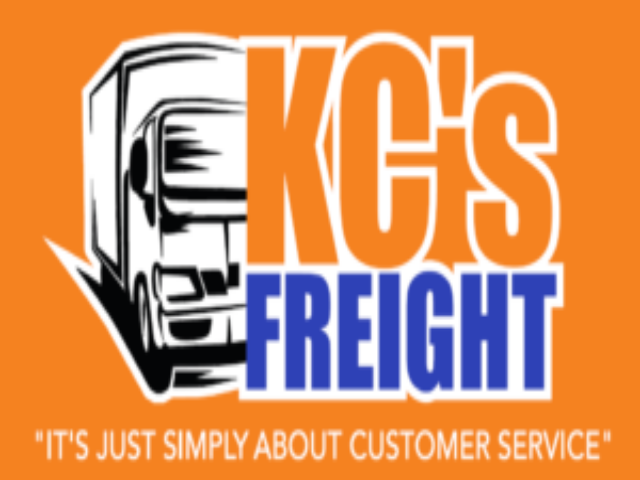
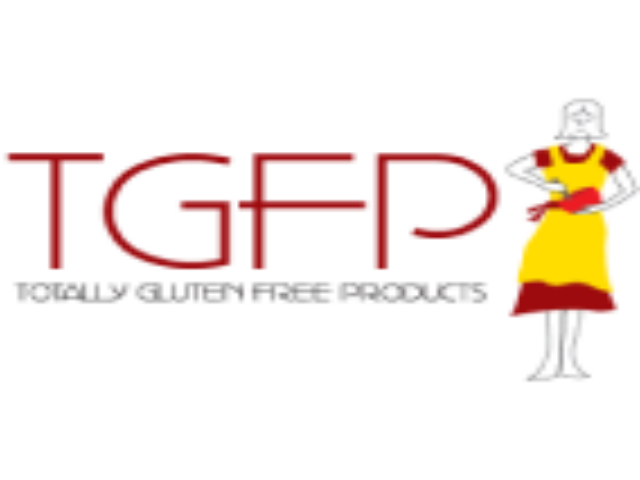
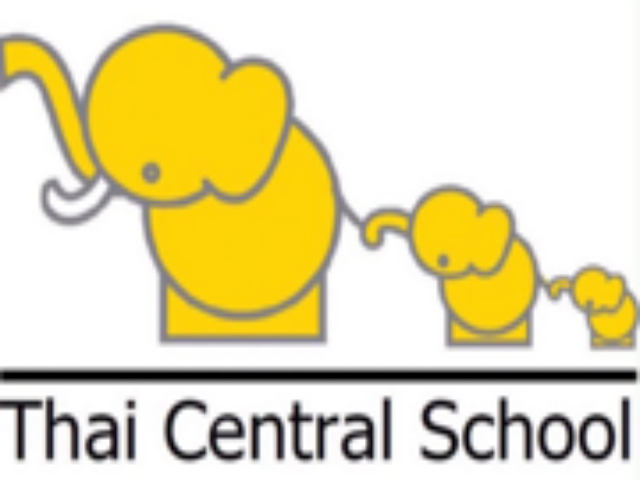

A snapshot of some of our work
What our clients are saying
Why work with AGR Technology for your local website needs?
Understanding the Challenges of Cross-Cultural Web Design

Entering English-speaking markets feels daunting if your digital presence doesn’t resonate. At AGR Technology, we know each audience brings different online habits and expectations. Our team helps you make a strong impression by creating websites that engage authentically and convert effectively.
Key Differences Between Chinese and English-Speaking Audiences
Understanding audience habits is critical. Chinese users interact with sites differently from Australian, UK and US users. In China, homepages often appear with lots of content—filled with links and visual elements—because users expect access to everything up front. But in English markets, people typically want clean layouts and clear pathways to information.
- Information architecture:
English-speaking users value logical menus and minimal click paths, while Chinese sites prioritise direct access via dense navigation.
- Visual design:
Western markets typically prefer spacious pages, simple fonts, and muted colours. In contrast, Chinese audiences are used to busy layouts and colourful visuals.
- Content expectations:
English-speaking customers look for clear language, concise details, and subtle calls-to-action. They value trust factors such as testimonials, privacy notices, and consistent branding.
AGR Technology helps you map these differences, applying site structure and design principles that fit local market norms.
Navigating Cultural Barriers and Preferences
Cultural preferences play a direct role in digital success. If your site doesn’t feel local or trustworthy, you risk losing visitors before any engagement.
- Language quality:
Direct translation won’t cut it—cultural nuance matters. We deliver fluent, locally-appropriate copy that preserves your brand’s message while building trust and relevance.
- Trust indicators:
Western users expect transparency—clearly displayed contact details, privacy policies, user reviews, and secure payment symbols increase conversions.
- User experience:
English-speaking markets value frictionless journeys—faster load times, accessible design, and mobile optimisation drive user satisfaction.
AGR Technology has refined cross-cultural processes so Chinese brands can seamlessly adjust both content and design for English-speaking consumers.
Ready to localise your web presence for real market growth? Contact AGR Technology’s cross-cultural web design specialists for a free consult—let’s make your brand stand out in any language.
Essential Design Elements for International Success
When Chinese brands move into English-speaking markets, web design needs to bridge expectations, build trust and drive engagement from first click. AGR Technology delivers tailored web solutions that fit the habits and preferences of your target audience—helping your brand make a powerful impact and win new customers.
Visual and Navigational Adaptations
Thoughtful layout and navigation set a brand apart. English-speaking users expect clean, organised designs with:
- Simple structures—clear menus and intuitive paths, avoiding clutter.
- Consistent branding—unified colours, logos, and font use for a trusted look.
- Prominent calls-to-action—noticeable buttons encourage action with clarity.
- Logical flow—information presented in a reader-friendly order, mirroring local browsing habits.
We structure each element to help users find what they want—whether browsing products, learning about your brand, or getting in touch easily. This builds trust and keeps them on your site longer.
Ready to refresh your website’s navigation? Speak with AGR Technology about custom solutions.
Localization of Language and Content
Precise content adaptation ensures your message resonates. Translation alone misses vital nuances. And forced literal translations can confuse users or even damage your reputation. AGR Technology provides:
- English copywriting—native tone and idioms that feel natural to your customers.
- Local cultural references—content relevant for target regions, including holidays, reviews, metrics, and payment info.
- Legal and compliance adjustments—adapting privacy policies, terms, and support in ways that follow local laws and expectations.
- Localised trust indicators—familiar safety badges, seals, and accessible customer service channels.
Smart content localisation shows you understand your market and builds lasting confidence.
Book a content consultation with AGR Technology for effective localisation without guesswork.
Mobile-Friendly Considerations
Mobile usage dominates in English-speaking countries, with over 65% of users shopping or browsing on smartphones (Statista, 2023). AGR Technology delivers:
- Responsive layouts—sites that automatically adjust to any screen size.
- Fast loading speeds—optimised images, code, and hosting for immediate access.
- Easy navigation—mobile menus, touch-friendly buttons, and accessible forms.
- Mobile payments—built-in options for Apple Pay, Google Pay, and PayPal.
Users drop off fast on clunky or slow mobile sites. We make sure yours keeps them engaged, wherever they are.
Cultural Relevance in Branding and User Experience
Connecting your Chinese brand with English-speaking customers isn’t just about translating text—it’s about creating trust and clarity from the first click. Many brands struggle with cultural disconnects, cluttered layouts, and unfamiliar design cues when launching abroad. At AGR Technology, we understand these challenges and help make your transition smoother with tailored web design, UX/UI, and digital localisation services. Here’s what you can expect and why it’s essential for real success in English-speaking markets.
Cultural Relevance in Branding and User Experience
Building trust and engagement with English-speaking audiences starts with understanding what matters to them. Every detail in your branding, graphics, and navigation contributes to the user’s perception of your business. AGR Technology works with you to create culturally resonant branding, localised content, and intuitive experiences, helping your brand feel welcoming and reliable from the very first interaction.
Incorporating Culturally Appropriate Imagery and Symbols
Carefully chosen visuals make a powerful impact.
• Use familiar images—Showcase settings, scenes, and people your target audience recognises, whether it’s cityscapes, nature, or diverse communities.
• Avoid confusion—Symbols or colours that resonate at home may not translate. For example, red signals good luck in China but can signal danger in the West.
• Opt for inclusive visuals—Display genuine diversity and avoid stereotypes to connect with everyone.
• Maintain brand identity—Blend your core branding with local touches. For example, adapt product images with local backgrounds or regional packaging styles.
AGR Technology helps you select and design graphics and images that align, giving your brand an authentic voice. Ready to make your brand relatable? Speak to our experts now.
Optimising UI Elements for Western Users
A seamless site keeps visitors engaged and builds trust.
• Prioritise ease of navigation—Western users prefer straightforward menus, breadcrumbs, and a simple homepage. Highlight services, categories, and calls-to-action upfront.
• Use whitespace—Reduce clutter to allow users to focus on what matters. Proper spacing boosts readability and keeps users engaged longer.
• Adopt Western design standards—Align button styles, form layouts, and content blocks with expectations found on top English-language websites.
• Focus on accessibility—Meet requirements for colour contrast, font sizes, and keyboard navigation to include users with different needs.
Our team at AGR Technology maps local user journeys, reworks navigation, and brings in familiar UI patterns. Start with a free consultation on how our web design service can make your site intuitive and powerful in any English market.
By blending culture-driven design with practical usability, AGR Technology ensures your business makes a strong, lasting impression. If you’re ready for expert, tailored support in adapting your website for English-speaking markets, contact us today to discuss our full range of web development and localisation services.
Strategies for Effective Market Entry
Expanding to English-speaking markets brings huge potential, but most Chinese businesses face hurdles like mismatched designs, weak engagement, and poor conversion rates. At AGR Technology, we understand the unique blend of local expectations and international standards that drive digital success. That’s why we create web experiences that are attractive, accessible, and built for your new audience—without losing what makes your brand unique.
Breaking into Western markets requires more than just translation—it takes expert web design, local market research, and a strategy that’s tested in real-world conditions. We offer proven methods to help Chinese brands like yours grow fast and build trust overseas.
Testing and Iterating with Target Audiences
Constant testing ensures your website clicks with English-speaking users.
- User interviews: We gather feedback from real Australians, Americans, and Brits. This tells us which images, navigation, and messages work (and what needs fixing).
- A/B testing: We try different calls to action, layouts, and headlines to see what converts best.
- Ongoing optimisation: We review analytics, watch for drop-offs, and refine your website until we see real improvements.
- Local usability tests: We check mobile performance, accessibility, and ease of use, all in line with local expectations.
Get in touch to see how our test-driven approach can give your brand the edge in new markets.
Balancing Brand Identity with Local Expectations
Keeping your brand identity strong while meeting local tastes ensures trust and recognition.
- Consistent branding: Your logo, colours, and mission always stay front and centre across all screens.
- Localised content: We rewrite—not just translate—your business story, making it relatable and compliant with local regulations.
- Cultural sensitivity: We remove any visuals or phrases that might confuse or push away English-speaking users, drawing instead from research-backed choices proven to engage Western audiences.
- Adaptable design: We introduce familiar layouts, strong calls to action, and symbols that align with Western UI standards—think clean navigation, visible trust marks, and simple booking forms.
Ask us today how AGR Technology brings balance between your established brand and new customer expectations.
Why Choose AGR Technology?
- Australian-based experts: We know what works here. Our team combines local insight with years of cross-border web design experience.
- End-to-end solutions: From site research and UX/UI design to SEO and ongoing conversion optimisation, we’ve helped dozens of Chinese brands build a lasting presence in English markets.
- Certified and trusted: We follow best practice and accessibility standards, keeping your business safe and visible in every region.
- Transparent results: We provide clear reporting, quantifiable improvements, and local support whenever you need it.
Conclusion
As Chinese brands look to grow in English-speaking markets, it’s clear that thoughtful web design plays a pivotal role in shaping user perceptions and building trust. By embracing local design preferences and cultural nuances, we can help brands create digital experiences that truly connect with new audiences.
Our approach goes beyond translation and technical tweaks—we focus on genuine engagement, user satisfaction, and long-term brand success. With the right strategy and expert support, Chinese brands are well-positioned to thrive and make a meaningful impact in these competitive markets.
Get into contact with us
Frequently Asked Questions
Why is it not enough to simply translate a Chinese website into English?
Simple translation misses important cultural and structural differences. To succeed with English-speaking users, websites need content localization, design adjustments, and trust elements tailored to local expectations, not just translated text.
What are the main differences between Chinese and English-speaking website preferences?
Chinese users tend to prefer busy homepages with lots of information and direct links, while English-speaking users favor clean layouts, logical navigation, and clear calls-to-action for a more streamlined browsing experience.
Why is web design so important for Chinese brands entering English-speaking markets?
Web design creates the first impression customers get of your brand. Well-designed sites build trust, show professionalism, and make it easy for users to find what they need—key factors for winning over English-speaking consumers.
What design elements help Chinese brands succeed in English-speaking markets?
Clean and organized layouts, clear branding, prominent calls-to-action, straightforward navigation, responsive (mobile-friendly) design, and the use of familiar, culturally relevant symbols and images are all crucial for market success.
How should Chinese brands localize their website content?
Localization should go beyond translation to include adapting language tone, cultural references, legal requirements, and visual elements so the website truly resonates with local users and follows all relevant laws.
Is mobile optimization important for Chinese brands expanding internationally?
Yes. Mobile usage is very high in English-speaking countries, so websites must be responsive and easy to use on smartphones and tablets for maximum engagement and credibility.
What role does cultural relevance play in web design for new markets?
Culturally relevant branding, imagery, and navigation make users feel understood and welcomed, helping build trust and encouraging them to engage more with the brand.
How can AGR Technology help with Chinese brands’ global expansion?
AGR Technology specializes in cross-cultural web design, helping Chinese brands adapt their sites for English-speaking markets with tailored solutions, user testing, ongoing optimization, and local market insights.
What strategy works best for entering English-speaking markets?
A combination of expert web design, thorough local market research, and a test-driven approach—using methods like user interviews and A/B testing—ensures your website meets the expectations of English-speaking users.
How can Chinese brands balance their original identity with localization?
Brands should keep core elements of their identity but adjust visual design, language, and content to fit local preferences. The goal is to be recognizable yet culturally relevant for the new audience.
Related content:
I have a business overseas and want to register a trademark in Australia?
Is Your Website Really Old and Not Mobile Friendly? Here’s Why You Need an Upgrade Now
China Sourcing & Procurement Services
International SEO Services & Consulting

Alessio Rigoli is the founder of AGR Technology and got his start working in the IT space originally in Education and then in the private sector helping businesses in various industries. Alessio maintains the blog and is interested in a number of different topics emerging and current such as Digital marketing, Software development, Cryptocurrency/Blockchain, Cyber security, Linux and more.
Alessio Rigoli, AGR Technology
![logo-new-23[1] logo-new-23[1]](https://agrtech.com.au/wp-content/uploads/elementor/thumbs/logo-new-231-qad2sqbr9f0wlvza81xod18hkirbk9apc0elfhpco4.png)
